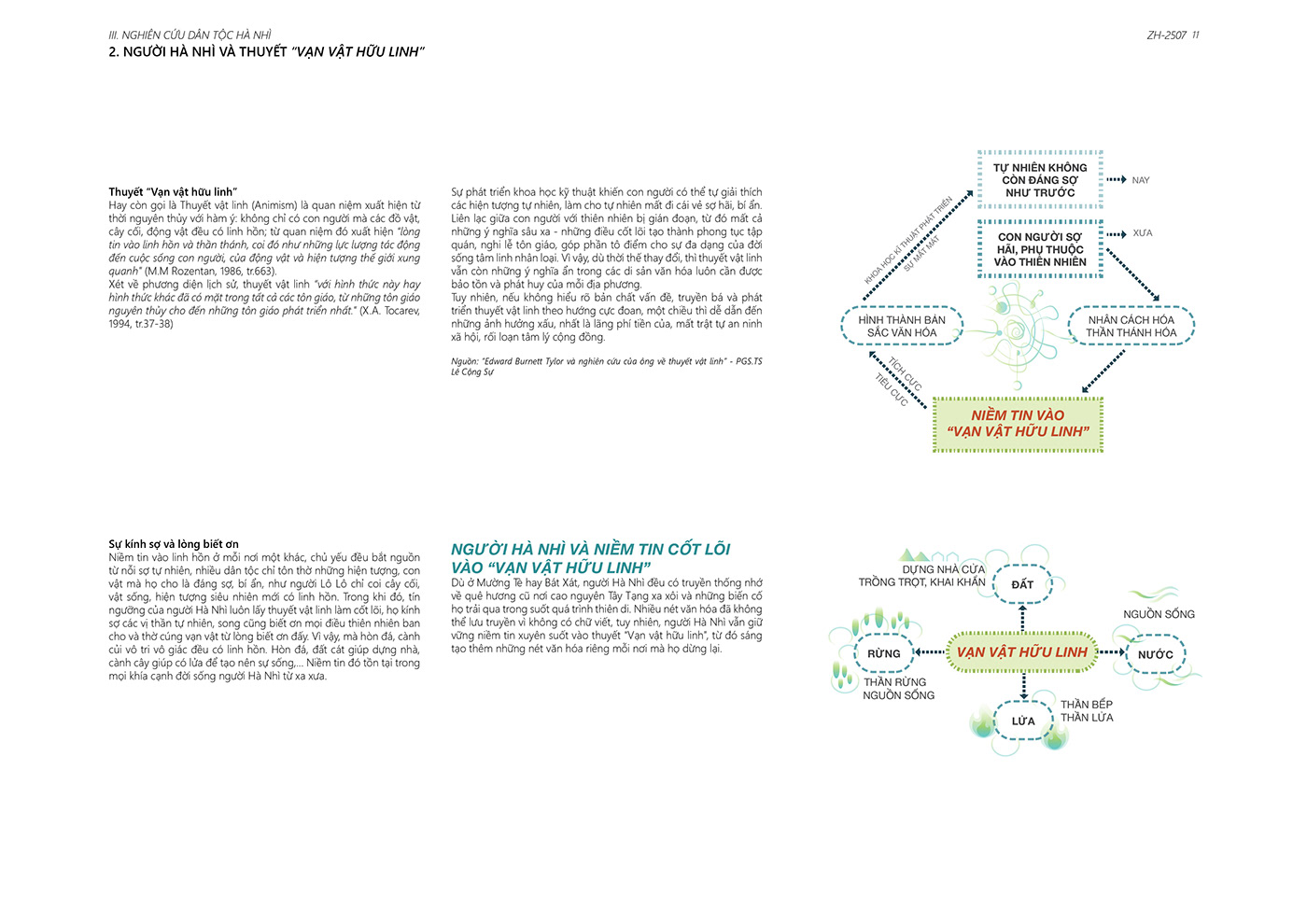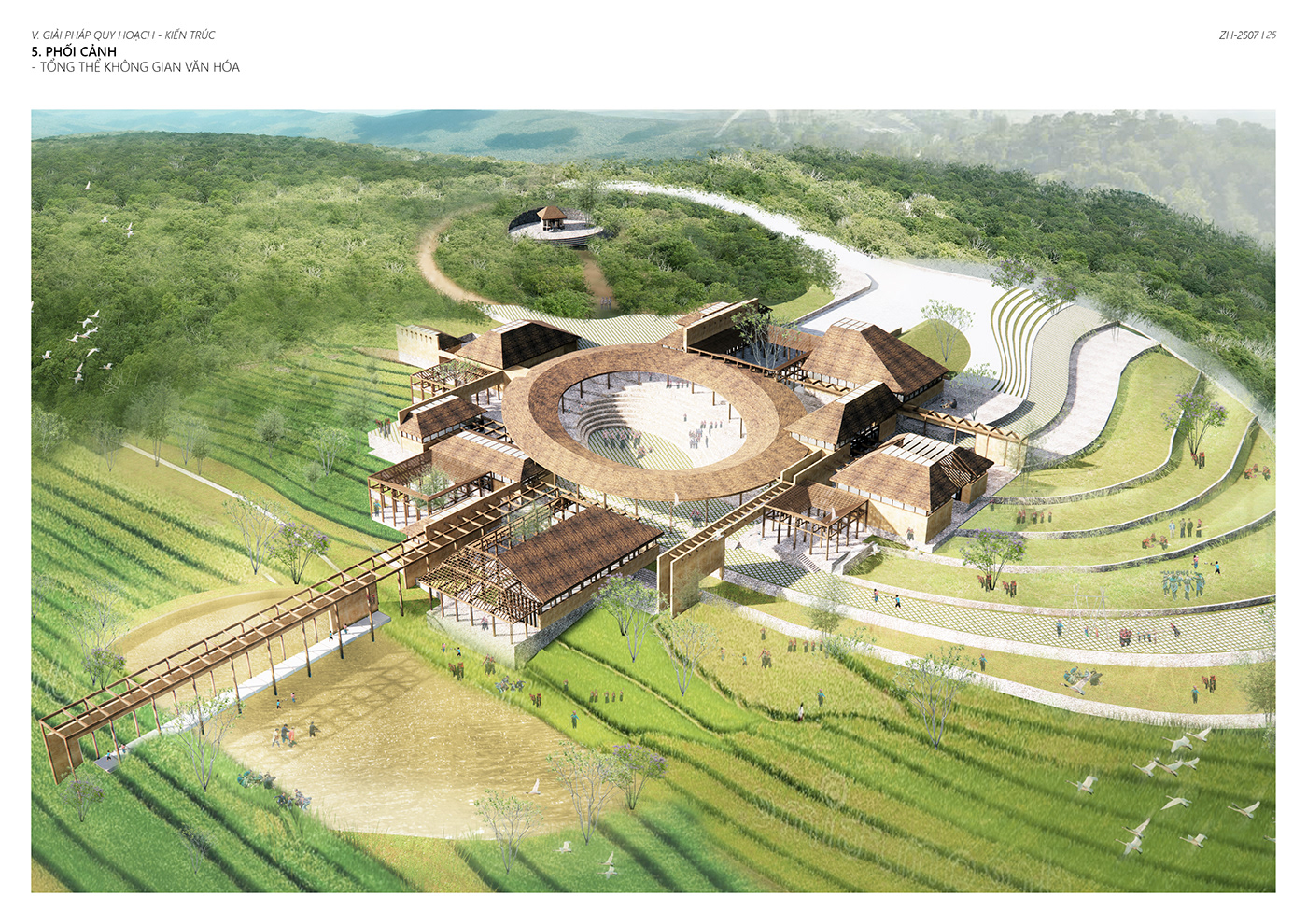CONCECTION OF THING (A Community Cultural Space for Hani people in Vietnam)
Since 2020, Dien Bien province has been focusing on preserving and promoting its cultural identity by organizing festivals for locals and tourists to engage with the traditional cultural space. Ta Mieu village (meaning big shrine), located in Sin Thau commune, Muong Nhe district, Dien Bien province, holds a significant position as a tri-border between Vietnam, Laos, and China. It marks the westernmost point of Vietnam and has great potential for tourism development, shaping the urban border gate. The Hani (one of 54 ethnic groups in Vietnam) are being supported through various projects, including the Community Cultural Space project, which highlights Hani culture at the spiritual location - Ta Mieu.
The choice of this project aims to develop a community cultural space that strongly promotes the traditional values of the Hani people in this remote three-way crossroads area, especially during this critical time when economic development projects are eroding cultural identity under the influence of commodity worship and monetary values, neglecting the core values that define the Hani ethnicity.
The project analyzes the cultural characteristics and worldview of the Hani people, which are closely tied to their core belief in Animism (the belief in innumerable spiritual beings capable of influencing human affairs), leading to the sanctification of all things and the formation of mechanisms to protect the living environment. Because of the migration, Hani people lived in small groups, scattered throughout the Northern of Vietnam, led to the loss of cutural identity. Their culture is being harmed by divided into small & fragile groups, it slightened their cultural resistance to belief. Therefore, the project emphasizes the impact of this core belief on the Hani people’s lives over time, focusing on sustainable development for the Hani community in the future.
The design develops from the terrain axis of the area, connecting the sacred village temple and a central courtyard, offering views of the vast characteristic valley landscape of the location. From the central courtyard, functional clusters are identified: Reception - Gallery - Production - Cultural activities - Services. Each cluster represents the Hani people's architectural progression over time: from traditional cob (a mixture of clay, sand, straw, and water) blocks to wall planes with wooden frames, to extended wall planes and spaces defined entirely by wooden frame construction (modern). This architectural approach forms a shared space for each functional cluster and will evolve to fulfill the demands of the Hani community.
The choice of this project aims to develop a community cultural space that strongly promotes the traditional values of the Hani people in this remote three-way crossroads area, especially during this critical time when economic development projects are eroding cultural identity under the influence of commodity worship and monetary values, neglecting the core values that define the Hani ethnicity.
The project analyzes the cultural characteristics and worldview of the Hani people, which are closely tied to their core belief in Animism (the belief in innumerable spiritual beings capable of influencing human affairs), leading to the sanctification of all things and the formation of mechanisms to protect the living environment. Because of the migration, Hani people lived in small groups, scattered throughout the Northern of Vietnam, led to the loss of cutural identity. Their culture is being harmed by divided into small & fragile groups, it slightened their cultural resistance to belief. Therefore, the project emphasizes the impact of this core belief on the Hani people’s lives over time, focusing on sustainable development for the Hani community in the future.
The design develops from the terrain axis of the area, connecting the sacred village temple and a central courtyard, offering views of the vast characteristic valley landscape of the location. From the central courtyard, functional clusters are identified: Reception - Gallery - Production - Cultural activities - Services. Each cluster represents the Hani people's architectural progression over time: from traditional cob (a mixture of clay, sand, straw, and water) blocks to wall planes with wooden frames, to extended wall planes and spaces defined entirely by wooden frame construction (modern). This architectural approach forms a shared space for each functional cluster and will evolve to fulfill the demands of the Hani community.

PORTFOLIO:












































